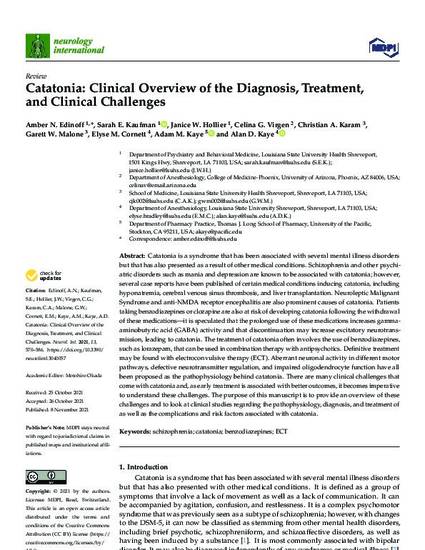
Catatonia is a syndrome that has been associated with several mental illness disorders but that has also presented as a result of other medical conditions. Schizophrenia and other psychiatric disorders such as mania and depression are known to be associated with catatonia; however, several case reports have been published of certain medical conditions inducing catatonia, including hypo-natremia, cerebral venous sinus thrombosis, and liver transplantation. Neuroleptic Malignant Syndrome and anti-NMDA receptor encephalitis are also prominent causes of catatonia. Patients taking benzodiazepines or clozapine are also at risk of developing catatonia following the withdrawal of these medications—it is speculated that the prolonged use of these medications increases gamma-aminobutyric acid (GABA) activity and that discontinuation may increase excitatory neurotrans-mission, leading to catatonia. The treatment of catatonia often involves the use of benzodiazepines, such as lorazepam, that can be used in combination therapy with antipsychotics. Definitive treatment may be found with electroconvulsive therapy (ECT). Aberrant neuronal activity in different motor pathways, defective neurotransmitter regulation, and impaired oligodendrocyte function have all been proposed as the pathophysiology behind catatonia. There are many clinical challenges that come with catatonia and, as early treatment is associated with better outcomes, it becomes imperative to understand these challenges. The purpose of this manuscript is to provide an overview of these challenges and to look at clinical studies regarding the pathophysiology, diagnosis, and treatment of as well as the complications and risk factors associated with catatonia.
Available at: http://works.bepress.com/adam-kaye/163/
